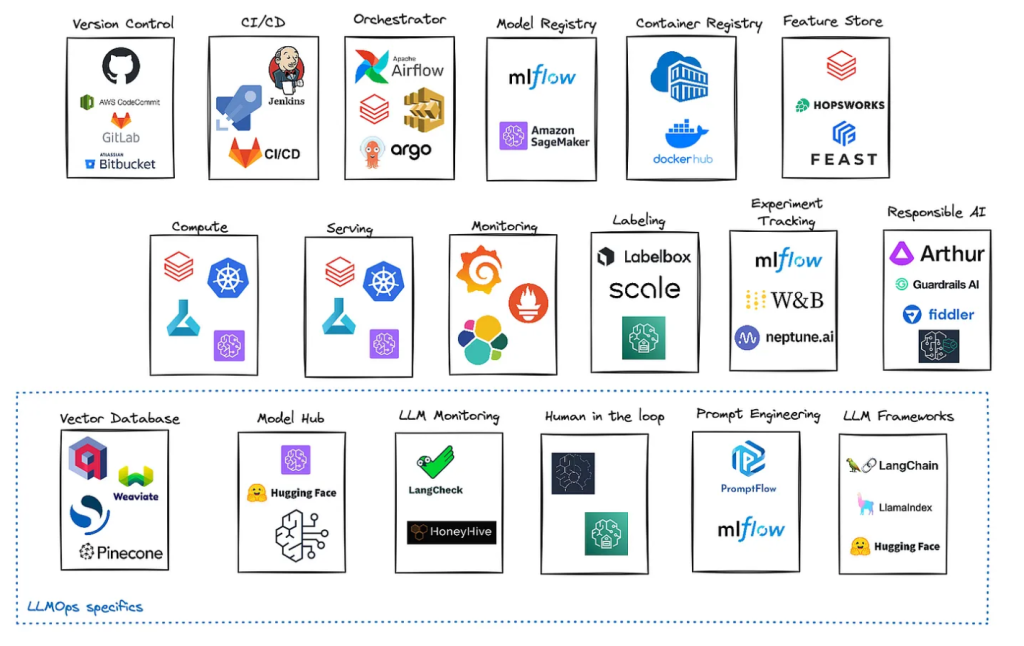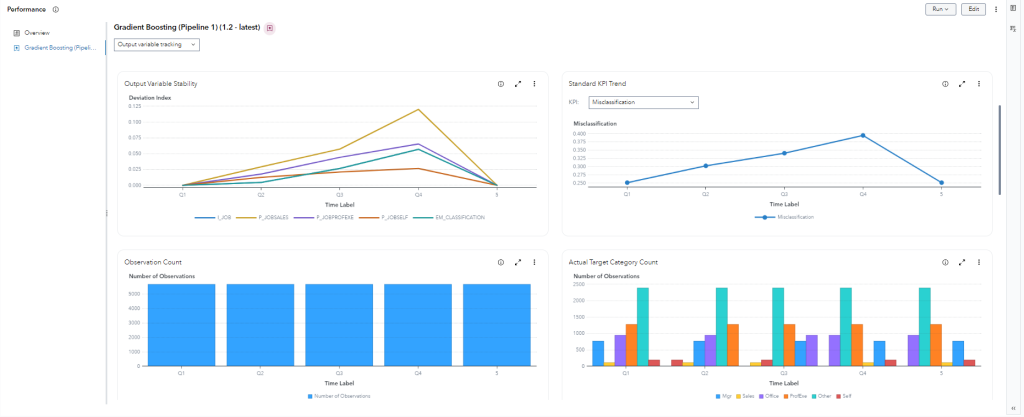A recent article came out with an updated list of necessary components for MLOps and LLMOps. And while this list may seem long, reading through the capabilities and components, I realized that SAS Viya already covers most of the required functionality. Organizations can have a hodgepodge of tools that they have to string together themselves or an analytics platform that already works with your favorite container registry.
SAS Viya is an end-to-end analytics platform with tools for:
- Accessing, managing, and preparing data
- Visualizing data, creating reports, and building dashboards
- Training machine learning models pipelines using no-code, low-code, SAS code, Python code, or R code
- Managing, deploying, and monitoring your models.
Everything you need is in the SAS Viya foundational offering. Thus, I would like to propose that the ultimate must-have for MLOps is SAS Viya.
Version Control
Model objects are versioned inside SAS Viya’s model management tool, including model code, metadata, properties, and more. Additionally, each version of a model can be score tested, deployed, and monitored inside SAS Viya. No need to rollback or copy your score code to work with a previous version of your model. Additionally, history is tracked with timestamps and usernames, so you know who to blame.
Orchestrator
SAS Viya comes with a workflow tool that allows you to specify your ideal MLOps processes and even enforce them! We recently used the workflow tool to create a trustworthy AI lifecycle workflow for embedding recommendations from the AI Risk Management Framework across the analytics lifecycle. But if you prefer other tools, no worries. SAS Viya features open APIs that can be used to build orchestration flows using your tooling of choice.
Model Registry
The model registry on SAS Viya organizes models into projects based on use case, not language. Projects share key information, like purpose and training data, allowing users to compare models side-by-side to determine the best fit for production. Models are stored with robust metadata, including performance on training data, input variables, output variables, modeler, creation date, modified data, created by, modified by, modeling tool, and I can keep going! But stayed tuned for an exciting update to our model registry. Model cards will soon be available to automatically visualize model health and well-being.
Compute
SAS Viya has compute to support SAS, Python, and R model training and execution through SAS Cloud Analytic Services (CAS). CAS provides the run-time environment for data management and analytics on SAS Viya. Thus, you will hear CAS referenced as a place to store data, but also as an analytical engine. From the model pipelining tool on SAS Viya, you can create model training pipelines consisting of out-of-the-box nodes, SAS code, Python code, and R code, that are compared side-by-side to find the most accurate model.
Serving
SAS Viya features various deployment destinations so models can be executed in the best form for each use case. For example, with SAS Viya you can:
- Host Python and SAS models as a REST-API endpoints on SAS Viya for ad-hoc transaction scoring
- Build containers for SAS, Python, and R models with the required dependencies and a minimal footprint and publish to registries in Docker, Azure, AWS, and GCP
- Score models on data tables in batch, which can be used in process flows, scheduled, or visualized in a dashboard
- Add business logic and orchestrate among multiple models within a decision flow.
Monitoring
Model performance and data drift are also monitored inside SAS Viya’s model management tool. The performance monitoring reports automatically generate a variety of metrics and charts, depending on the type of model being monitored. These reports can also be customized to add new charts or remove charts you don’t need.
Experiment Tracking
The model pipeline tool on SAS Viya makes experimentation easy! The pipelining tool allows you to string data preprocessing steps with multiple models and ensembling to build a model experiment in just a few clicks. To work even faster, you can leverage the out-of-box templates, create and share your own templates, or use Automated Machine Learning.
This tool makes a data scientist’s job much easier by automatically splitting the data into training, testing, and validation, automatically calculating assessment metrics across all three sets, and providing hyperparameter autotuning. Data scientists can view the results of each node, each pipeline, or across pipelines to focus their attention on the models with the most potential. Once they are happy with their models, they can be added to the model repository in two clicks.
Responsible AI
SAS leads in Responsible AI. SAS takes a multi-prong approach for helping organizations build more trustworthy AI systems, through participation in multiple AI boards, advisory services, embedded features in SAS Viya, and more. Just to name a few features, SAS Viya support information privacy classifications for data, lineage, bias assessment, bias mitigation, Trustworthy AI Lifecycle workflow, and soon, the model card! To dive deeper, you can explore the other SAS Trustworthy AI blogs.
Human in the Loop
Keeping humans in the loop is easy on SAS Viya. Using the workflow tool, you can add system tasks to notify or email users or groups whenever something needs their attention. Users can also be prompted to take actions through assigned user tasks. And with an abundance of visualizations summarizing key information throughout SAS Viya, users can quickly view status and know when to act.
Conclusion
SAS Viya is the most productive analytics platform. Within a few hours, you can upload a data set, explore and visualize the data to build out your understanding, train top performing machine learning models, and deploy the champion model to make better decisions and improve outcomes. Instead of spending your time stringing together a bunch of components, spend time building more accurate models. Mitigate risk of error, reduce vulnerabilities, and lessen cognitive load caused from gluing together tools and make analytics easier with SAS Viya.
Don’t believe me? Well, there is still time to register for the SAS Hackathon. Participants in the SAS Hackathon bring a problem, build a team, find data, and have a month to build their solution. Most importantly, SAS provides access to SAS Viya, training, and mentoring for free. But you need to register before August 30th!




